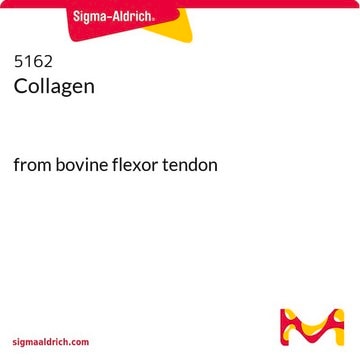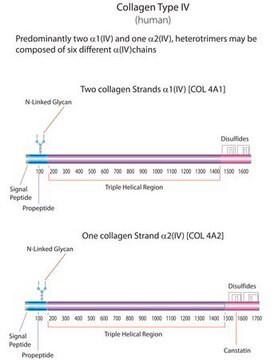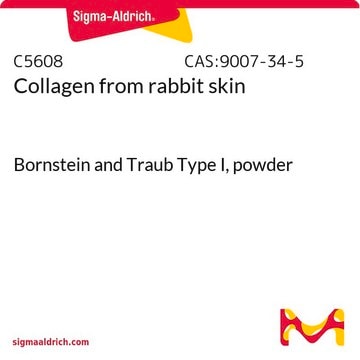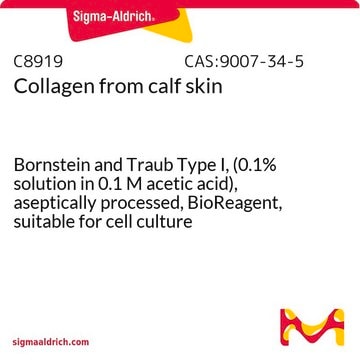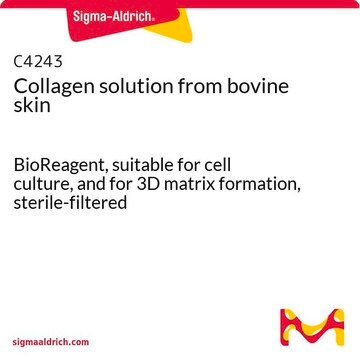C5483
Human Collagen Type I
from human placenta, powder, ~95% (SDS-PAGE), suitable for cell culture
About This Item
Recommended Products
product name
Collagen human, Bornstein and Traub Type I, acid soluble, powder, ~95% (SDS-PAGE)
biological source
human
Quality Level
Assay
~95% (SDS-PAGE)
form
powder
technique(s)
cell culture | stem cell: suitable
solubility
aqueous acid: ≤5 mg/mL
UniProt accession no.
storage temp.
2-8°C
Gene Information
human ... COL1A2(1278)
Looking for similar products? Visit Product Comparison Guide
General description
Application
Collagen Type I has been used as a scaffold for the growth in vitro of stem cells in a wide variety of biomaterial engineering studies.
- as a component of extracellular matrix in the chemotaxis assay of the rat adipose-derived stem cells
- in adhesion assay of the adult retinal pigmented epithelium-19 (ARPE-19) cell line
- in the glycation aggregation and adsorption studies as a model system for arthritis
Biochem/physiol Actions
Preparation Note
Storage Class Code
11 - Combustible Solids
WGK
WGK 1
Flash Point(F)
Not applicable
Flash Point(C)
Not applicable
Personal Protective Equipment
Certificates of Analysis (COA)
Search for Certificates of Analysis (COA) by entering the products Lot/Batch Number. Lot and Batch Numbers can be found on a product’s label following the words ‘Lot’ or ‘Batch’.
Already Own This Product?
Find documentation for the products that you have recently purchased in the Document Library.
Customers Also Viewed
Our team of scientists has experience in all areas of research including Life Science, Material Science, Chemical Synthesis, Chromatography, Analytical and many others.
Contact Technical Service





